People, Surf MoviesFreedom Is A Surfboard With Two Fins
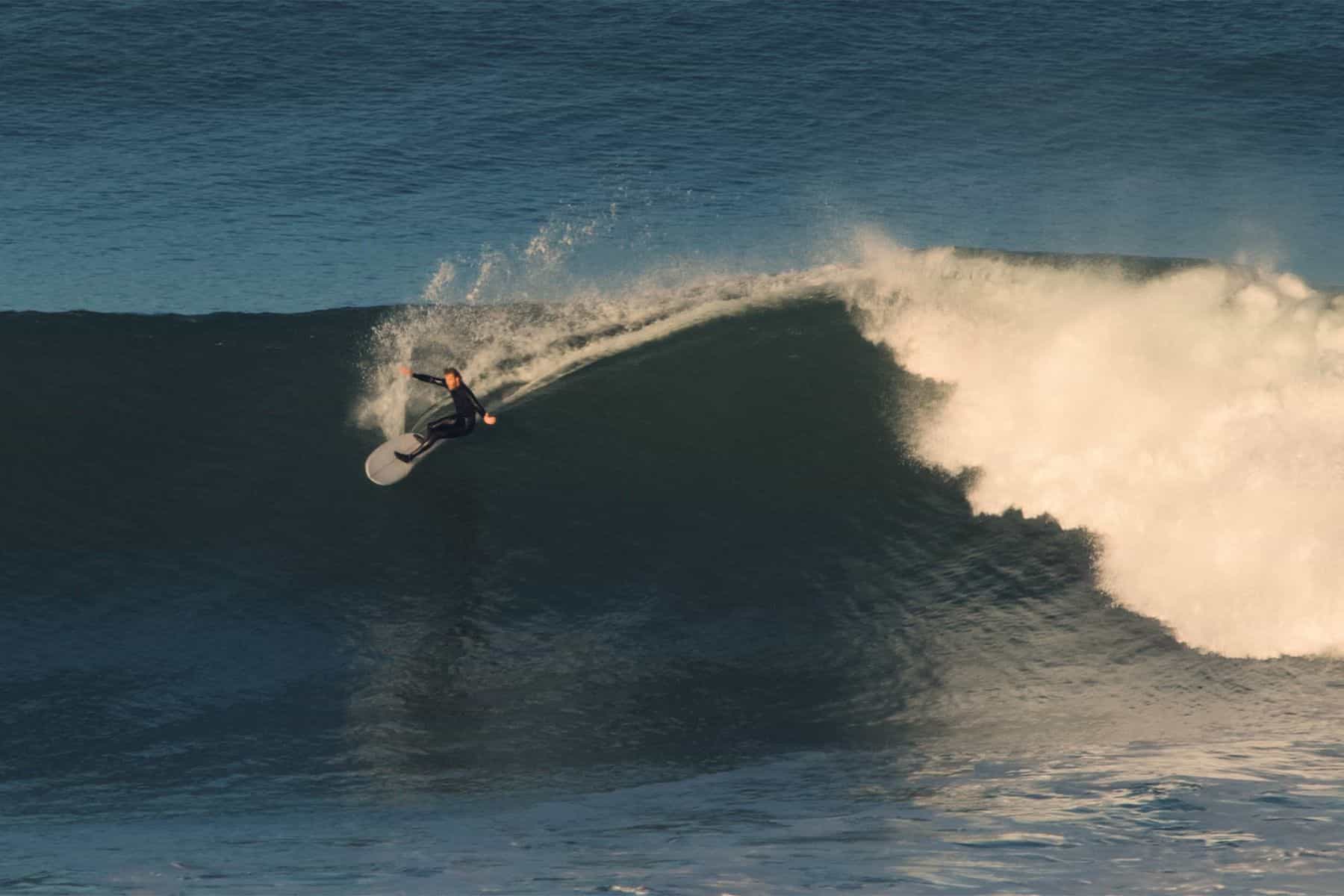
The Torren Martyn Interview
You’d need to have been living in a cave a hundred miles from the ocean with no internet, to have not seen somebody surfing a twin-finned pintail surfboard recently – or at least running down the beach with one. Maybe you’re that person surfing or carrying said twin fin. The explosion in popularity of these smooth surfing twins, many of which nudge up into the mid-length category, can largely be attributed to one person: Torren Martyn. The Byron Bay resident’s smooth, almost languorous style, and his natural ability to casually place himself at the back of heaving tubes have caught the attention and triggered the imagination of many surfers. And if there’s one thing that we know about most surfers, it’s that their first step towards “surfing like that” is to order a brand new surfboard. We all want to surf like Torren Martyn.
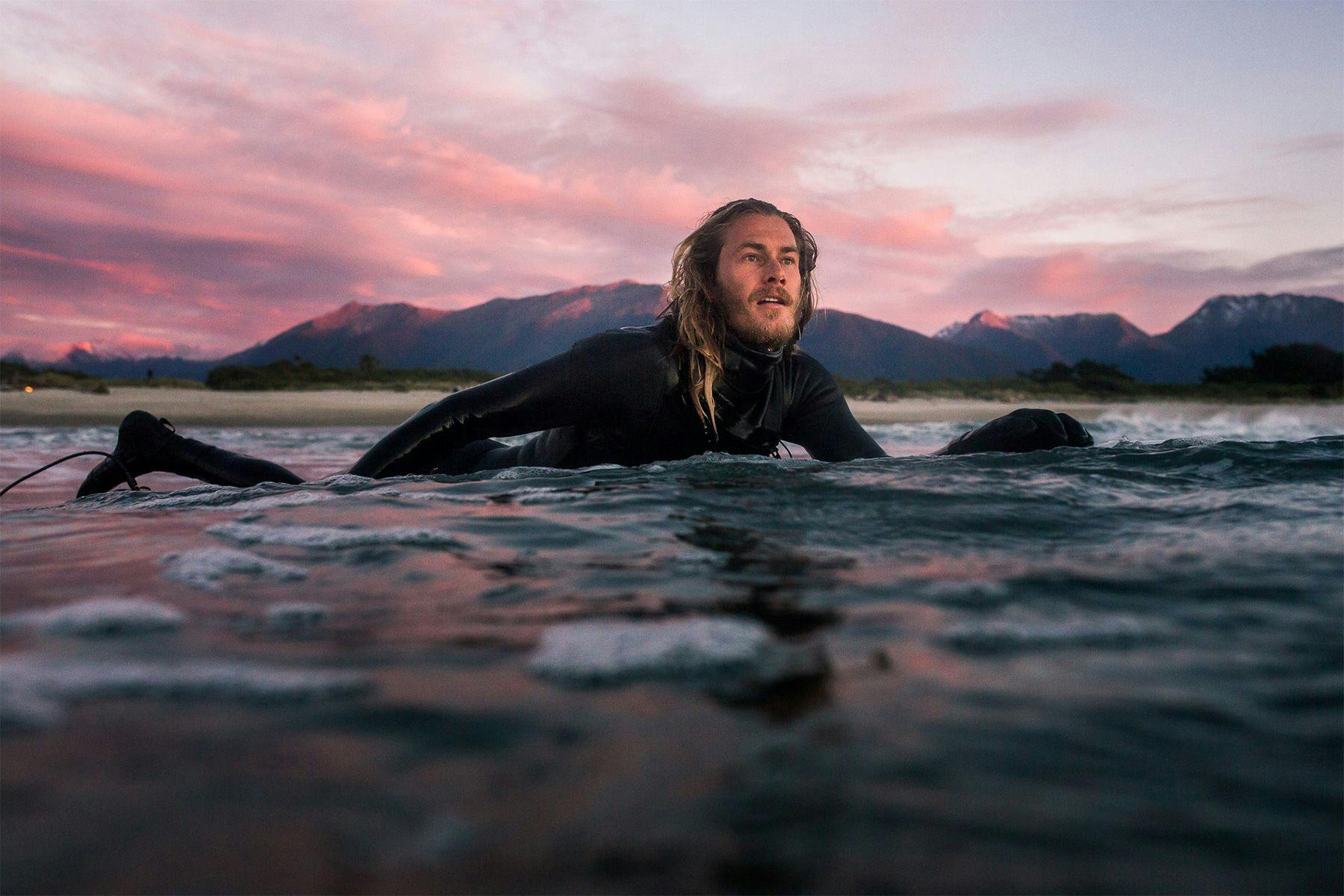
Martyn and his best friend and filmmaking partner, Ishka Folkwell, have carved a career for themselves over the last few years out of documenting Torren’s particular brand of wave riding and everyman surf travel (pre-pandemic). Supported by needessentials, a function-over-fashion wetsuit and surf brand founded by a good friend of theirs, the pair have bucked the trend for short web edits and have focused on producing longer-form surf films. Their last trip, which drew to a close just as the coronavirus pandemic was exploding across the planet, was a three month journey down the Atlantic coasts of Europe and Africa from the far north of Scotland to Senegal. As the fourth film in their Lost Track: Atlantic series was released online, Torren, who is currently travelling around Australia in a van with his partner, managed to park up in a spot in the Western Australian outback with enough phone signal to speak with us about his surfboards, his trips, and his films.
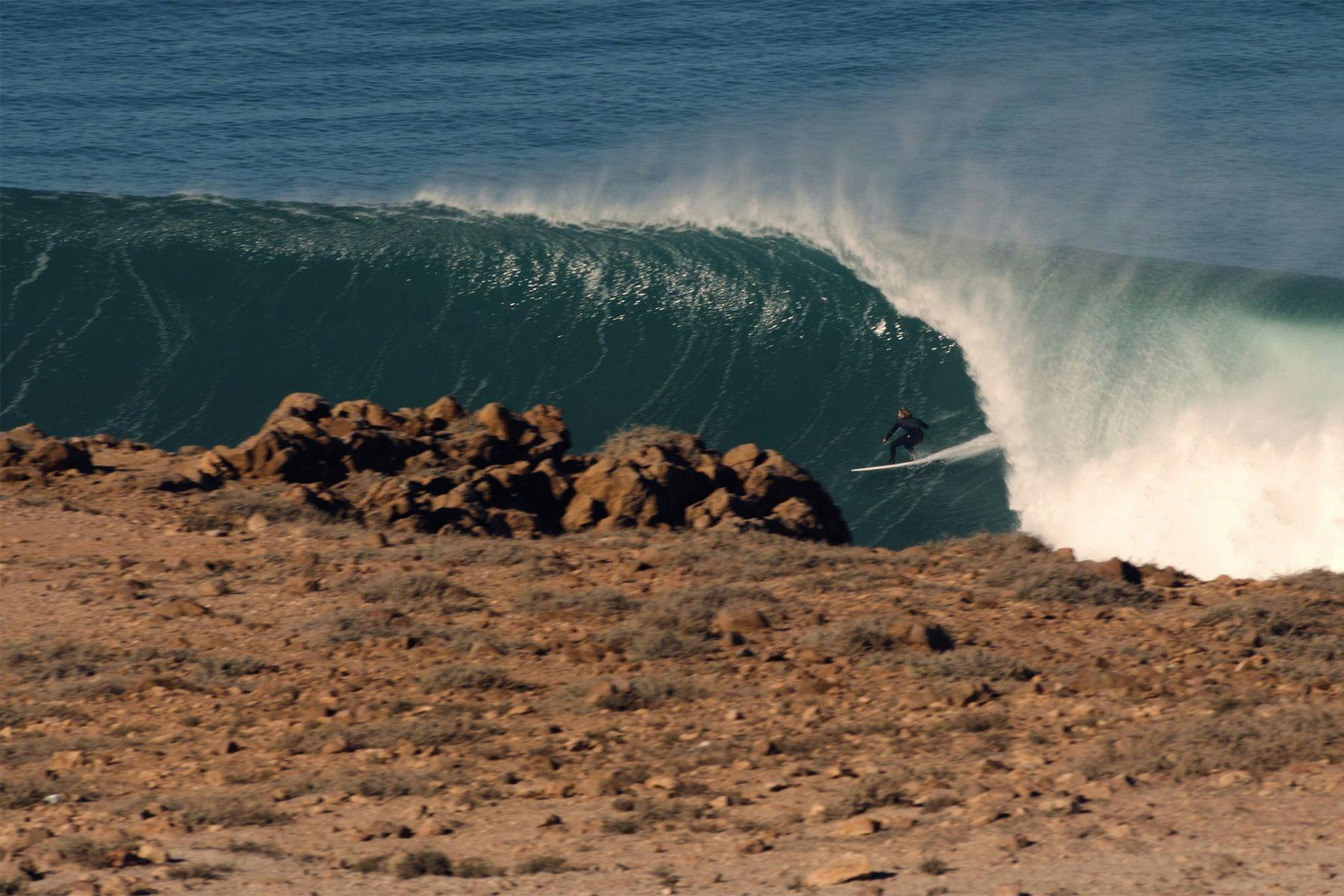
Torren, as somebody who grew up in the fast-paced world of high performance shortboarding around Byron Bay, how did you end up riding twin fins?
My introduction to twin fins came about through meeting Simon Jones [Morning of The Earth Surfboards], and also probably happened at an age and stage of my life when I was keen to try something new. I think that was about six or seven years ago now. Simon and I had been connected through mutual friends and I had a great respect for what he was doing. I was really inspired by the boards that he was making and at the time I think I had tried, or had my eyes on, a twin fin or two and the relationship between he and I developed. The first board that he made me was a single fin though, I think about a 5’6” or 5’7”, and I’d never really gelled with single fins. I was pretty transparent about that with him and we ended up putting a couple of side boxes in it, removed the center fin, and ran it as a twin fin and I absolutely fell in love with it. It became my favourite board, instantly. That’s where that all took off from.
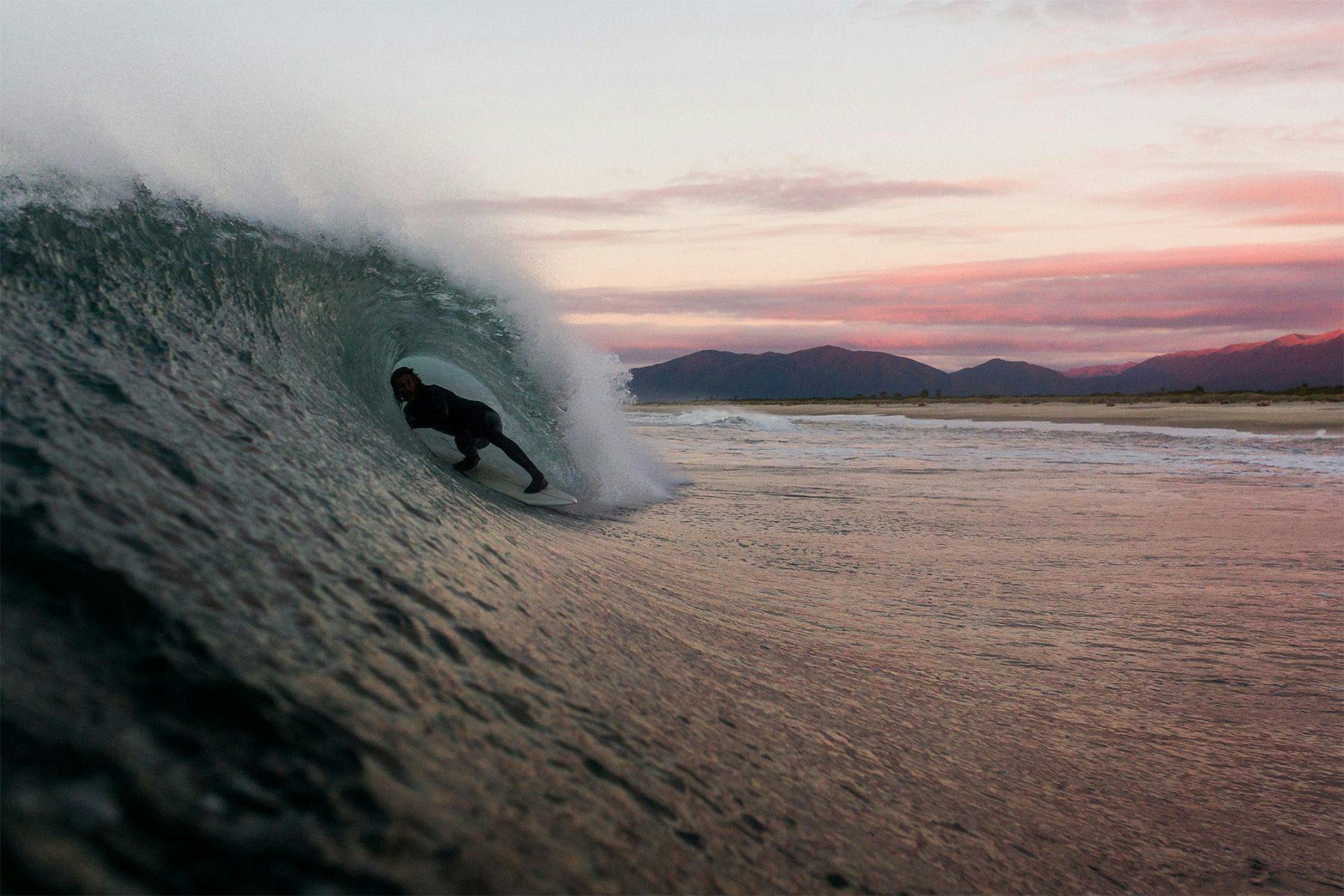
Is this career that you’ve developed something that would have ever crossed your mind as a teenager?
I guess that as a frothing young grom or teenager, you kinda dream about this sort of thing. When you’re doing your local boardriders, or little contests here and there, and kind of admire professional surfers and grow up on a diet of surf films.. But I didn’t ever really think it was going to be a reality, and it hasn’t been until the last five years or so that things have gone that way.
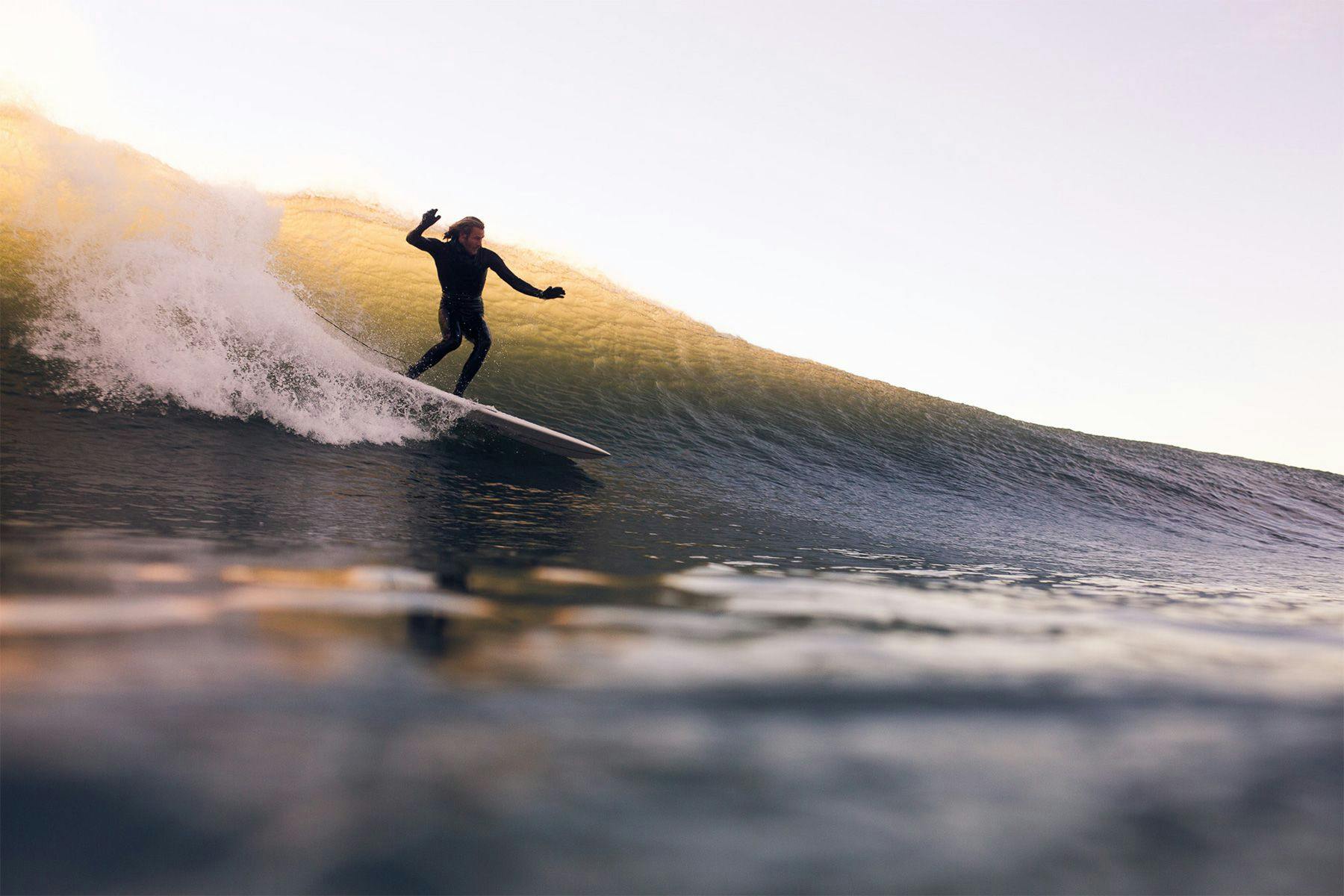
You’re known for riding and popularizing twin fins. Are there ever moments when you feel pigeon-holed or restricted by this association?
Not at all. I feel that my gravitation towards twin fins and mid lengths has been quite personal; they’re what excite me and what feels good. That’s not saying that that will always be the case. I think that for all of us, that feeling is always changing – with the boards and waves that we’re surfing and different stages of our surfing lives. At the moment they still feel really good to me and there’s so much to explore, not only around the amount of fins but also fin placement and basically every other aspect of a surfboard. It’s hard to know what it’ll be like in five years to come, but yeah twin fins feel good and I don’t feel pigeon-holed by any means. Surfing’s so exciting and changeable, and I think that one thing always leads to another but the boards and that path are feeling kind of on-track at the moment.
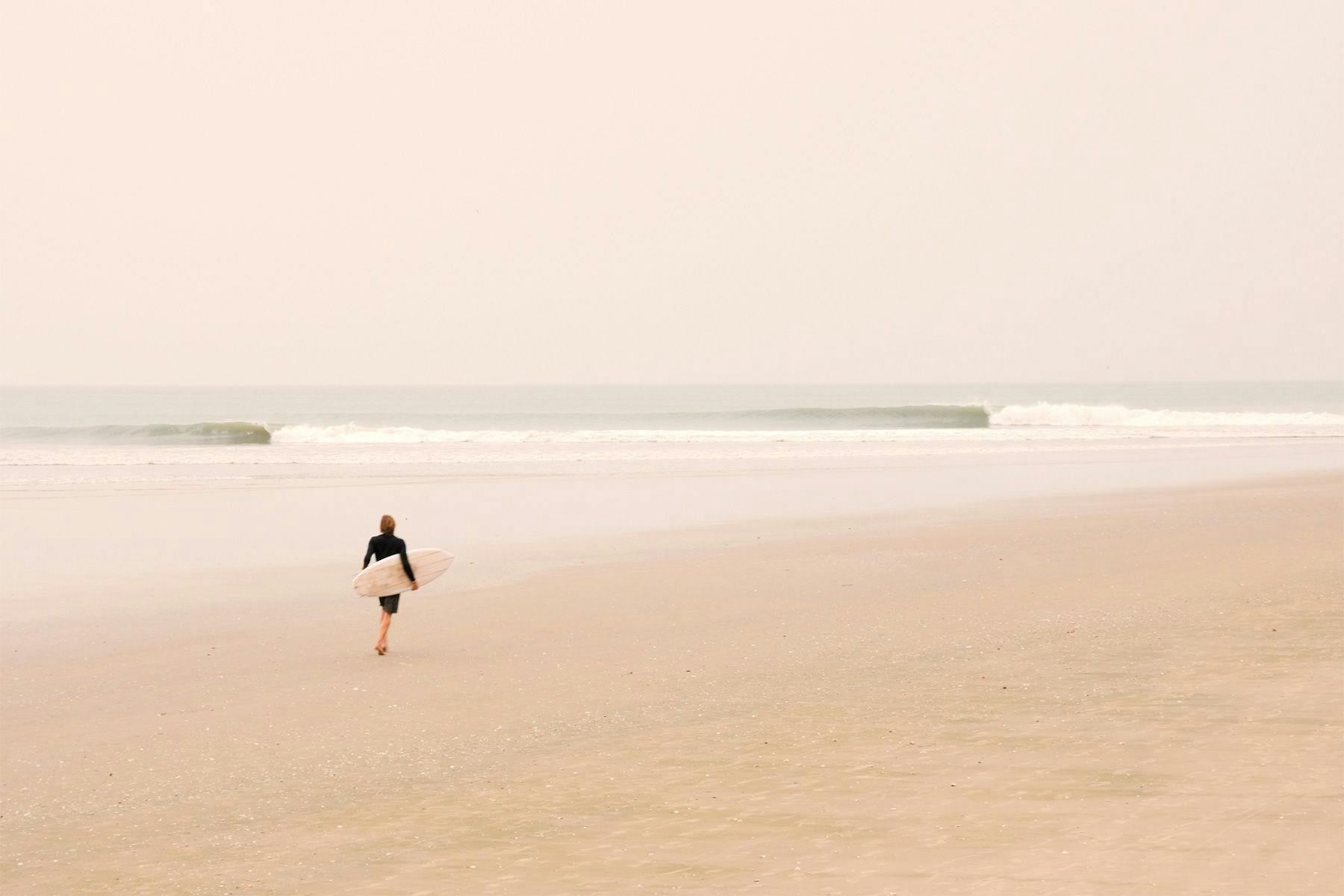
You ride twin fins but less often fishes, which are what many surfers automatically think of when they think of twin-finned surfboards. Why don’t you ride fishes very much, and what’re the differences between them and the shapes that you are on?
If you close your eyes and imagine a traditional fish surfboard, you probably envision a swallow tailed, keel fin, five-ish foot board. I think when the relationship between Simon and I started my boards were certainly a lot shorter than they are now. But I guess one element of the shapes is that they incorporated more modern elements; they had a more traditional outline and even though the foam was evenly distributed throughout and far from a modern shortboard, there definitely were up-to-date design features that brought that level of performance. I guess the waves that I started surfing on them were decent Indonesian waves too, not your go-to so-called “fun” waves. So the refining and the feedback that I had for Simon was based around waves of that sort of quality which I think contributed a lot to way that they were surfed and the waves that they were surfed in.
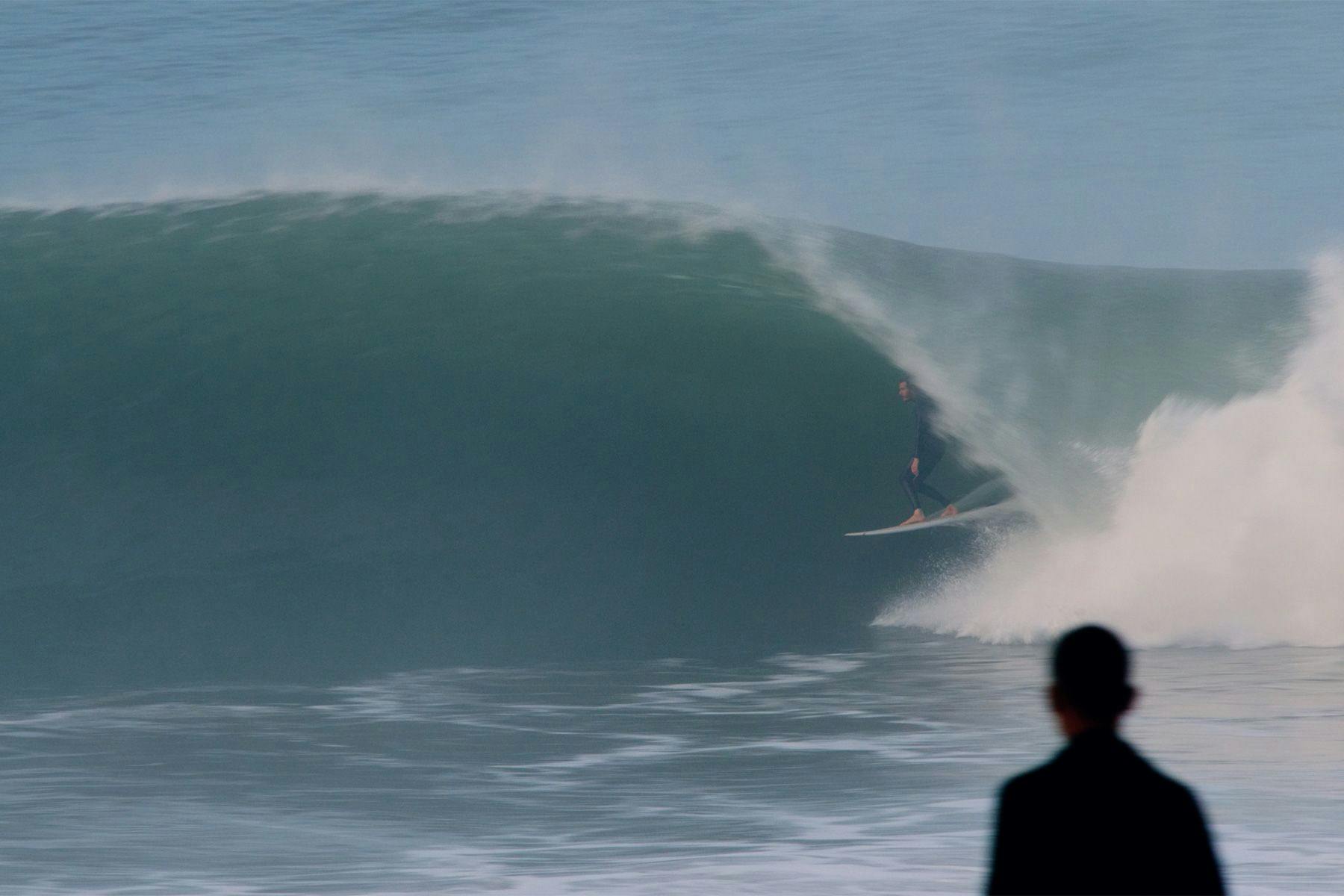
Your surfboards in particular are a marriage of fins and tail shapes… can you tell us about your working relationship with Simon [Jones, of Morning of the Earth Surfboards], and how your boards are developed?
Simon lives ten minutes down the road, so when I’m home we spend a heap of time together between the shaping bay and in the water. We have quite a unique relationship and even a funny language that we use to talk about how a certain board feels, or a feeling that you’d like to get on a certain wave. He’s incredibly talented in the way that he can interpret and put into action the things that I’m feeling, or the feelings that I’d like to get out of a certain board. A lot of the changes are really small. There are back and forth conversations about “shall we try the fin box a quarter of an inch back?” and there’ll be other boards where I might be glued to a certain shape and want something totally new and completely different to what I’m riding right now. Saying that, I really don’t, at the moment, have two boards that are even remotely the same. They’re all different and quite unique, and if there ever is one that is a complete magic board and I’m going on a trip and think it’d be unreal to have a back-up of that, then that’s probably the only time I’d have a copy shaped. Normally though, I’m travelling with three or four surfboards, maximum, and trying to have all bases covered. The shortest board and the longest board are the first ones that go into the bag and then I like to try to fill the gap between them. Developing those shapes always comes back to having a wave in mind, and a desire to be surfing different parts of the wave.
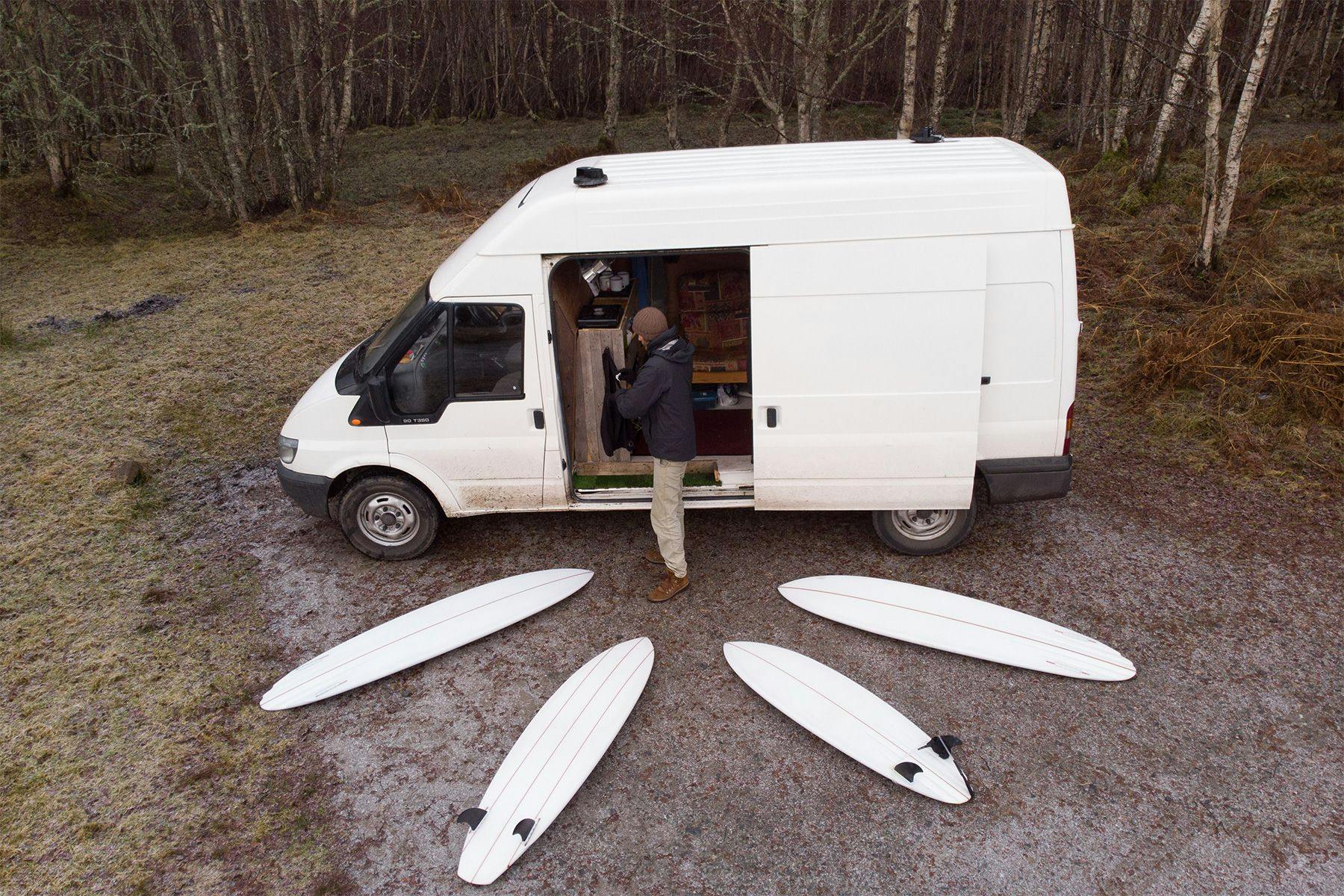
How do you balance speed, manoeuvrability, and hold in your surfboards?
For a long time the majority of my boards have been channel bottoms. It’s funny because with a channel bottom it’s almost like there’s an incredible amount of hold and drive, but in certain situations they can have a lot of release and almost cavitate, in a way. It’s all a juggle and a case of trying to balance all of the elements. There’s so much to be said just about fin choice alone, and fin placement. It’s hard to ever be on top of all those elements.
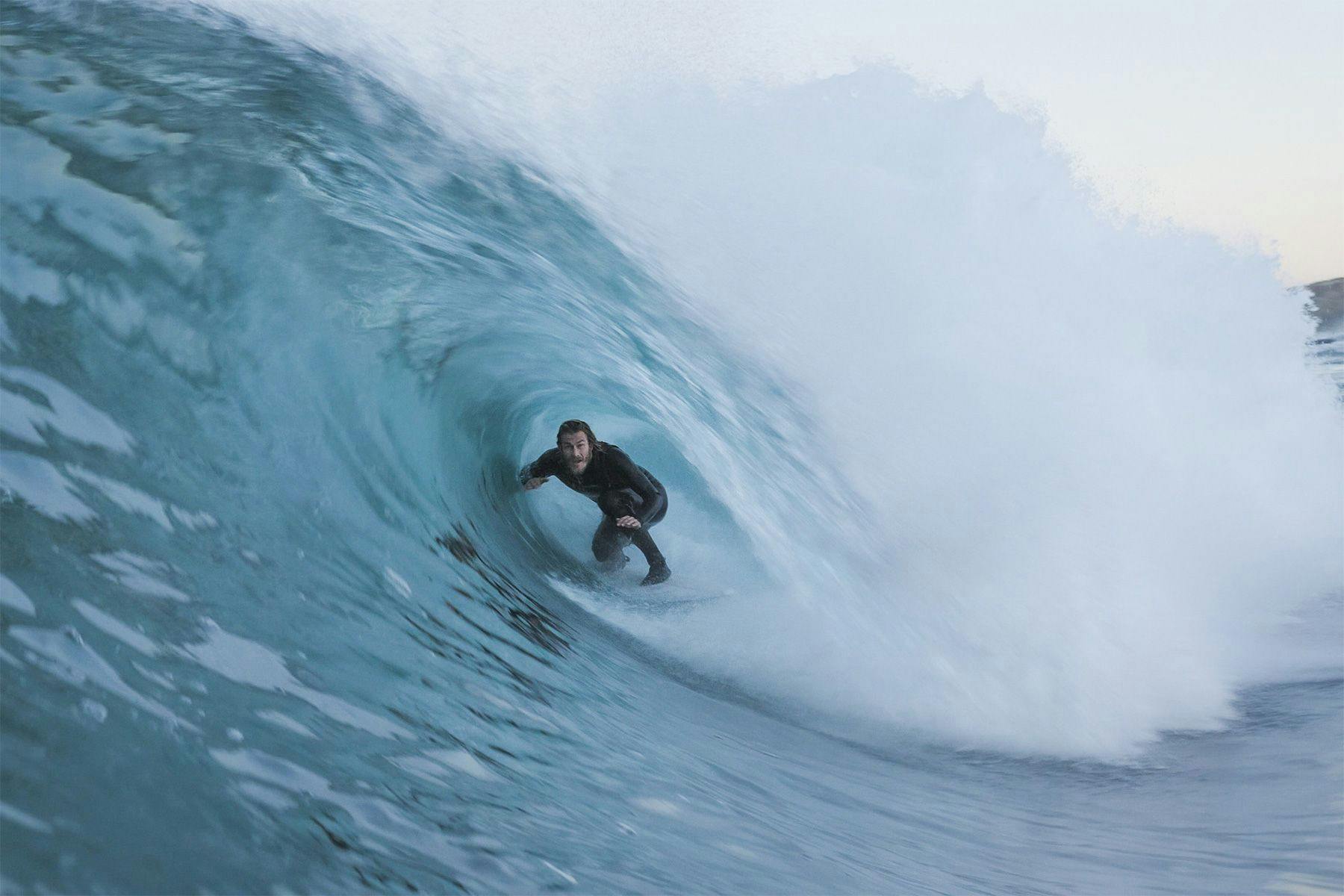
You’re no passenger when it comes to fins. Can you tell us about the different fin templates that you use on different boards and why?
Fin design is incredibly important and has a huge contribution to any board. We’ve narrowed it down to two twin fin templates as our staples: an upright, raked, solid fiberglass fin, and a solid keel fin which has significantly more surface area and is stiffer. Both are quite rigid fins, but one thing that is unique about the fins that we’ve designed is that they have an inside foil of about 20-30%, so 70:30 or 80:20. The idea behind the inside foil is that a lot of the time when you’re surfing a twin fin on rail it’s essentially a single fin. The outline of the board itself is somewhat similar to a traditional single fin, and that lends itself to one fin being in the water when its on rail. That’s where the idea of the double-foiled sides came from, even though they’re not a symmetrical 50:50 foil. That came from the first batch of fins that we made, and Simon using a bath and slicing a fin through the water and seeing the amount of air that came off it and the way that it felt in his hand. We kind of went down the track of shaping a bit off the other side and it felt good. There are plenty more places to go with it, for sure.
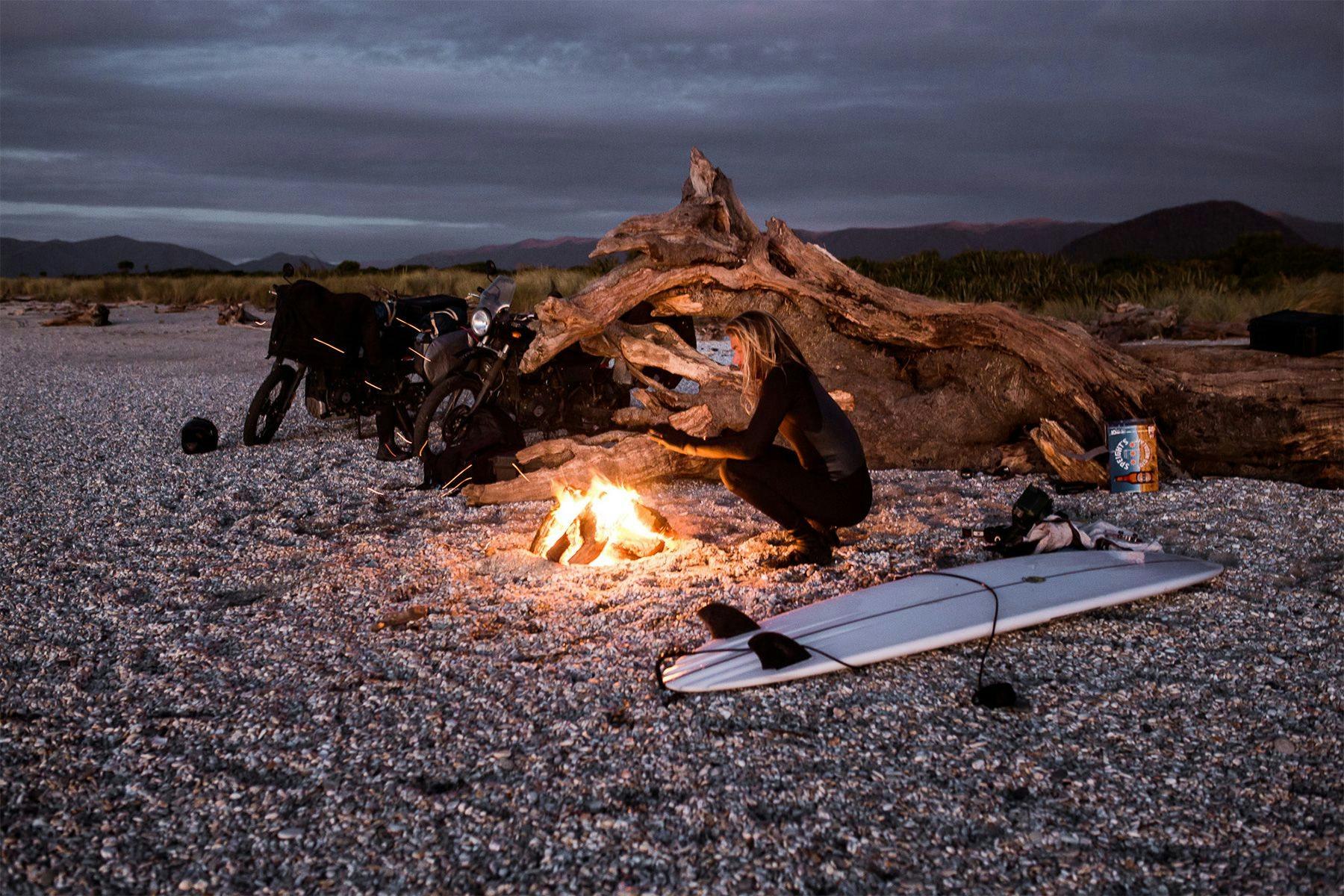
Does the surfboard dictate the surfing style, or vice versa?
Jumping between surfboards, you can never really surf two boards the same. You can try, but different boards certainly lend themselves to different parts of the wave. When you think about a broad spectrum, from a 5’8” to a 7’ board, they’re not ever going to perform the same. Like I said before, I don’t really have two identical surfboards in my quiver and I certainly notice that my surfing style, or my approach to a wave, changes significantly between boards. That’s what keeps it really exciting. Certainly a surfer has a certain style and approach to a wave, but I feel that the surfboard pretty heavily dictates the way that anyone can really ride them.
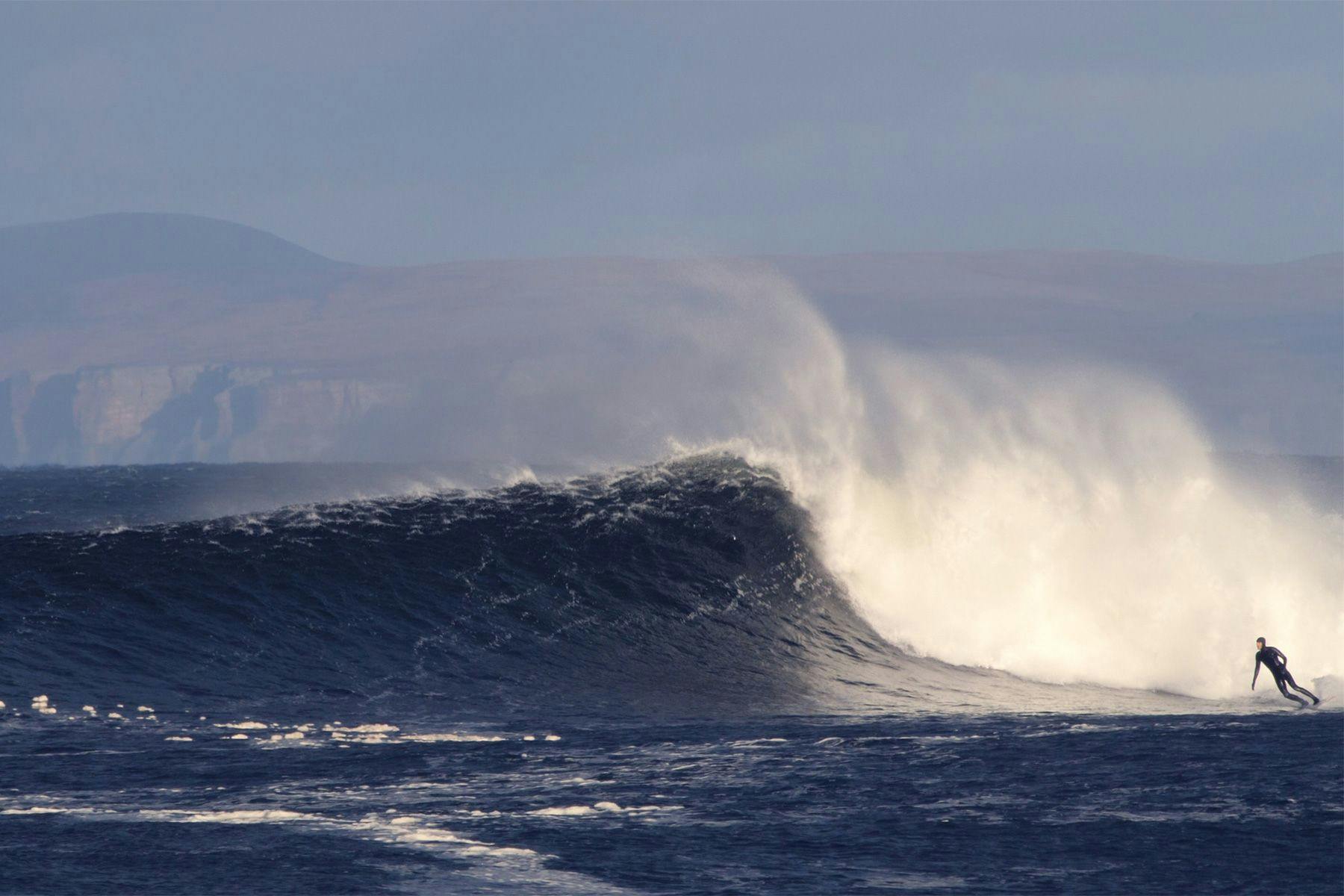
You often take a very low stance on your boards, crouching or sitting over your back foot, particularly when in the barrel. Why is this and how did this technique develop?
I don’t know where that came from. I like to surf all parts of the board and I guess that the low squatted stance, with a lot of the weight over the middle to back half, has come from that. The funny thing about when you get really, really, low and close to the water is it’s the same as when you’re driving a go-kart and you’re close to the ground. You feel like you’re moving so fast. When you’re quite compressed as well, you can do these really minute adjustments because your arms aren’t flailing about and you aren’t top heavy – you’re low and stable. It’s a really cool feeling and the redirections and adjustments can be much finer.
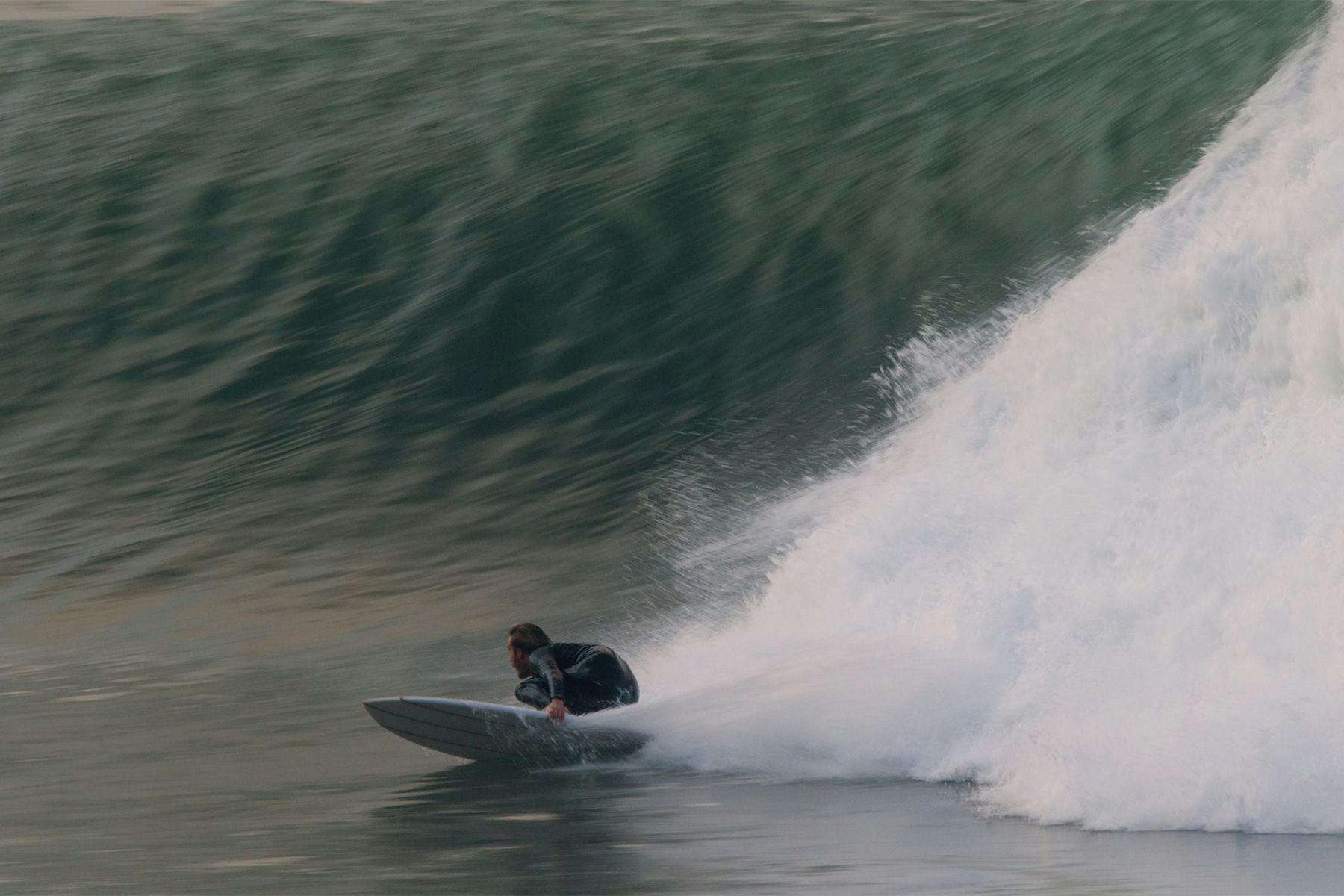
As a talented twin fin riding free surfer who has an appreciation for nature and simple living in rural NSW, have you at any stage been concerned about being labeled as being a next-step on from Dave Rastovich? If so, would that be an issue?
No, I haven’t really thought about it like that at all. I mean Dave lives locally, about 5kms from where I live in Byron, and we do actually surf together quite a bit. But I don’t feel like I’ve been labeled that – although I’m not sure! I’ve got a huge amount of respect and appreciation for what he does and his surfing, I think he’s incredible, and if anybody’s ever said that I’d take it as a huge compliment.
Your films buck the trend of the sub-five minute web shorts that have dominated in recent years. Do you think that you’ve proven that there’s still an appetite and attention span for longer form travelogue surf films?
There certainly seems to be a lack of that sort of storytelling in a lot of modern surf films. Not that we’re trying to fill a gap in the market or anything like that. We’ve put a lot more time into the films, from the journeys themselves through to the editing process. Creatively it’s something that we’ve been really passionate about, that’s excited Ishka and I, and we’ve had an opportunity to document really special parts of our lives and some really memorable trips. To be able to share that through the films that we have, you can’t really do that in under five minutes. There’s certainly a place for the short web clips, but that’s the other side of the track to the one that we’ve been going down in the last few years.
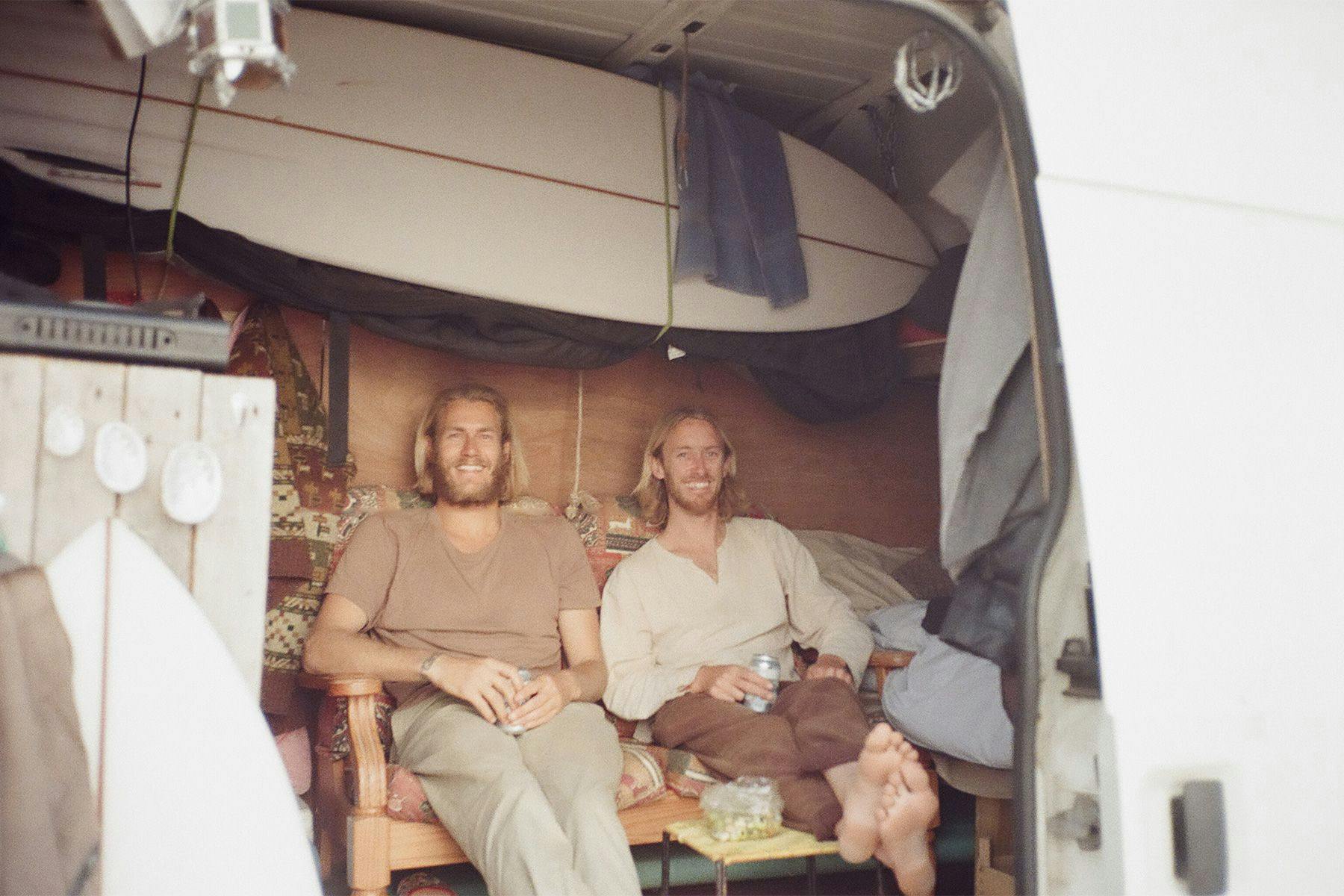
What’s the process behind making these films. Do you start with much of a plan, story or concept for the film, or is it largely dictated by events and pulled together afterwards?
The approach that we take to each film varies. For example, Thank You Mother, when we set out with the idea to make that film we wanted to tell the story of the relationship between Alby Falzon, Simon Jones and I. It was the first, I don’t know if you’d call it a documentary, but the first film with a narrative for Ishka and I. It was tricky. After the conversation that we had with Alby, everything fell into place and it changed from what we’d initially had in mind, but it turned into something much more. It’s been a learning curve. You can’t orchestrate too much on that side of the films. For the travel documentary style films that we do, they basically tells their own story from the start of the trip to the end of the trip – there’s your timeline, and the narrative and the things that happen in between are genuine and real, nothing is set up or staged. It’s in the editing process afterwards when you stitch it all together. The bones are all there and then the narration that goes over the top glues it together. A lot of the films have an original soundtrack, or music that has been inspired by artists along the way, so there’s a huge amount of time that goes into making the music, and a huge amount of time that goes into editing. But it’s epic that we’re able to use friends who are musicians who make incredible music. It’s all quite personal and close to home in a lot of ways.
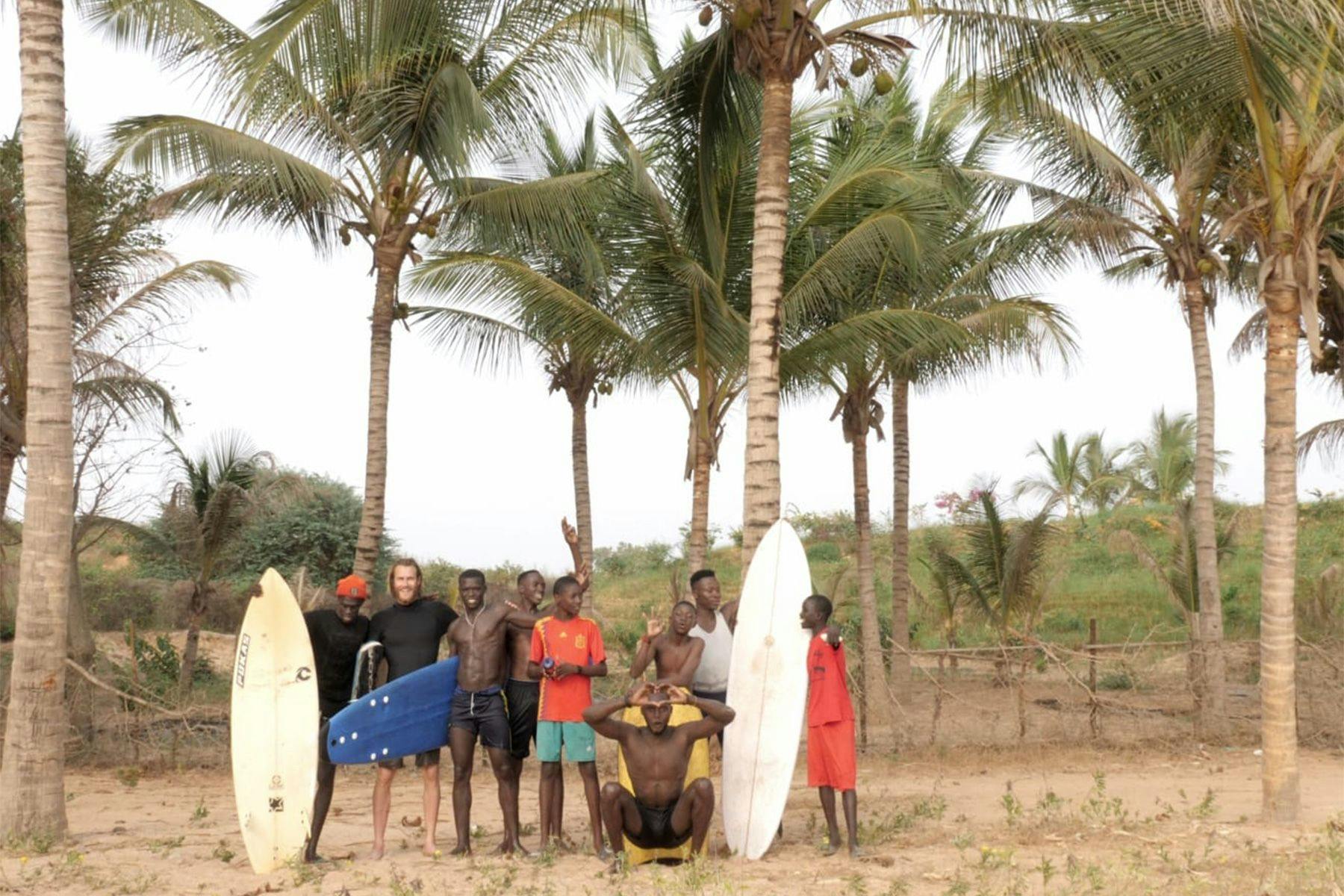
After the trips, how do the final films come together?
After a filming trip we’ll come home and refresh ourselves with the footage that we’ve got, and catch up with Ryan who owns needessentials. He’s a good mate of ours and he’s great at helping us to tell a story. We’ll go through and make a plan of the story that we have, and the story that we want to tell. It starts with a really, really rough edit, and then within our circle of friends we bounce it back off each other and sit with it, refine it down, and gradually develop the final product. There’s no single plan or structure, it chops and changes quite a lot. The story is there, we’re not trying to manipulate or change anything. It’s always true to the journey and the experience that we had.
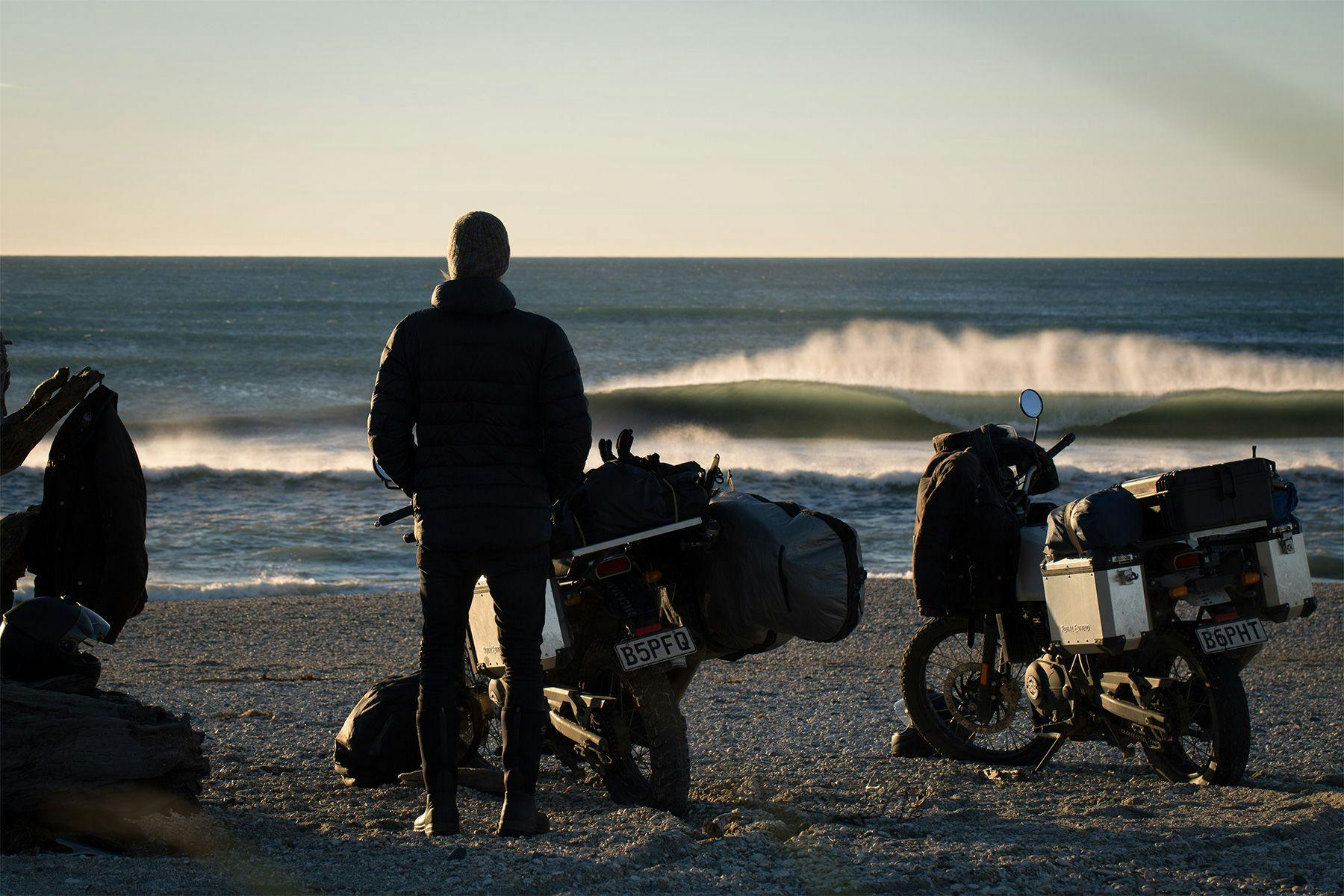
Not all of your trips become films. I’m thinking of your surf-packing hike down the Cape-to-Cape trail in Western Australia that ran as an article in The Surfer’s Journal. As a professional free surfer, what’s it like having to always be thinking about an angle or outlet for your surf trips, or do some go undocumented?
There’s definitely a lot of surfing, especially over the last couple of years, that’s gone undocumented, but generally we’ll be working towards something or have an idea in mind. Nothing’s forced and I’m also not forced, like a lot of other sponsored surfers are, to do team trips that put you in a position where you don’t have control over the final product or the film, which is something that I’m very grateful for. With mine and Ishka’s relationship, and the relationship that we have with needessentials, there’s so much freedom there. It’s really exciting, we’re always talking about the next film, chapter or idea.
The Cape to Cape trip was with a good mate of mine called Nick Colbey. He’s from the east coast of Aus but was living over in Western Australia at the time. He was excited and passionate about doing that hike. It was something that my girlfriend and I wanted to join him on, and he captured a few parts of it along the way and put together a story for The Surfer’s Journal.
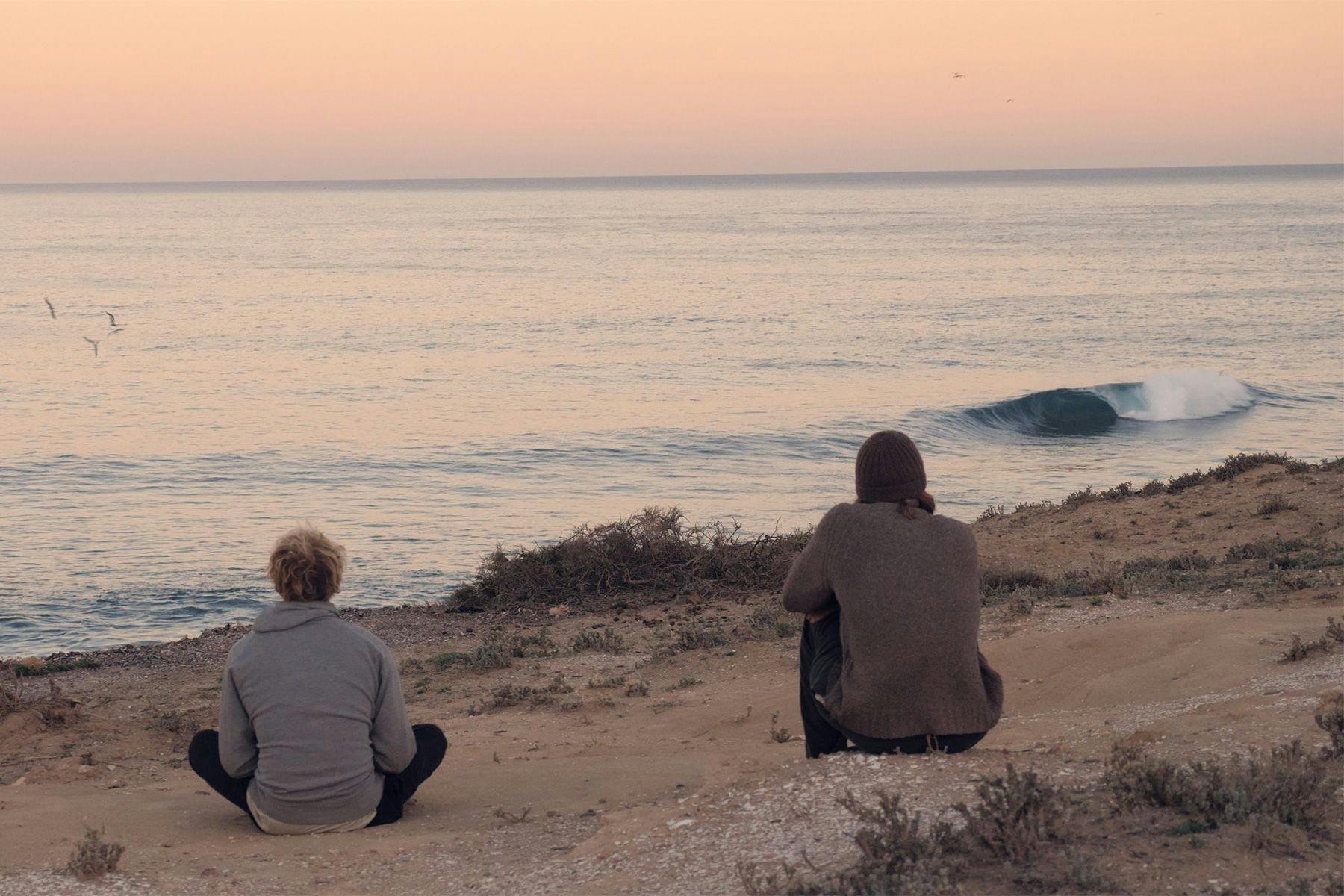
In the second instalment of Lost Track: Atlantic, you travelled from Northern Scotland to Morocco in a single hit to meet a swell, bypassing almost all of mainland Europe’s best breaks (save for a few days around Mundaka). Was this an easy decision because of how well known and crowded those surf zones can be, or was it a tough call?
That was a big spur of the moment call that we had to make, because neither Ishka or I had spent much time in Europe at all. It’s so far away from home and there’s so much to see and do there. We were bummed about missing a lot of Europe, but we were so excited about getting to Morocco. In a way we had tunnel vision about it, but I don’t at all regret the decision to miss Europe because we just had such an incredible time in Morocco and scored amazing waves. Beforehand we had no idea about what was coming with COVID, and the big plan was to return the van back to the UK afterwards. Ishka had a three month window before he had to get back to his partner and that’s when my girlfriend Aiyana met us over there, and we were planning to drive the van back up through Europe. I thought we were going to have another few months on the road, taking our time and doing the Europe thing, but the virus changed all of that. We ended up ditching the van and scooting home. I’d like to get back and spend some time in Europe. There’s an incredible amount of quality waves there, and the people have been so welcoming and kind, and I’ve got some good friends over there. So one day, hopefully!
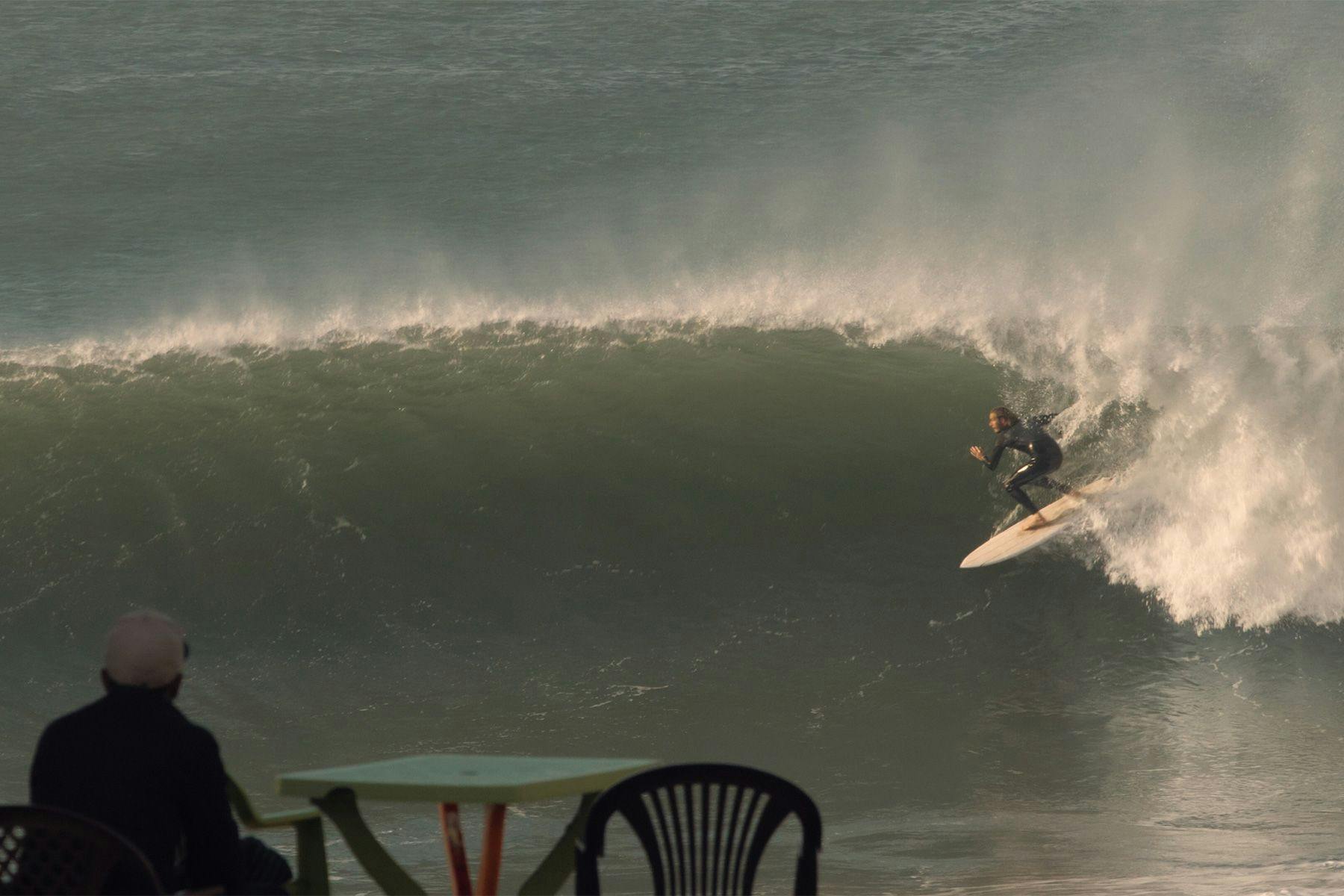
How much of a gamble was that old builder’s van?! Did you ever think it might prove to be the weak point in the whole project, or did you have a back-up plan or contingency funds in case it completely failed on you?
Yeah, that van! That was a funny one. It’s hard to buy anything before you arrive anywhere and we wanted to have something to start working on as soon as we got to the UK and be on the road as soon as possible. needessentials Europe are over there in the UK, run by a good friend of ours called Jamie and his family. Jamie had been on the lookout for a van, and there was no pressure to buy one but he found that van and it seemed like a really genuine sale, so he jumped on it. He hadn’t been able to get it checked over because their family mechanic was busy for the week. When we arrived it was behind their warehouse and we were jazzed. We would have loved to have got it checked over right at the beginning but we also just wanted to start working on it. We spent the week fitting it out, and it was just like you see in the film – we were leaving the warehouse ready to get it all checked over ready to drive to Scotland, and the clutch blew out. At the time, right then at the start of the trip, we were like “fuck, have we got a full-blown lemon?” but now, looking back, that was minor. We ended up doing tens of thousands of Ks and it’s still going now. I think we got a ripper, really! I wouldn’t change a thing.
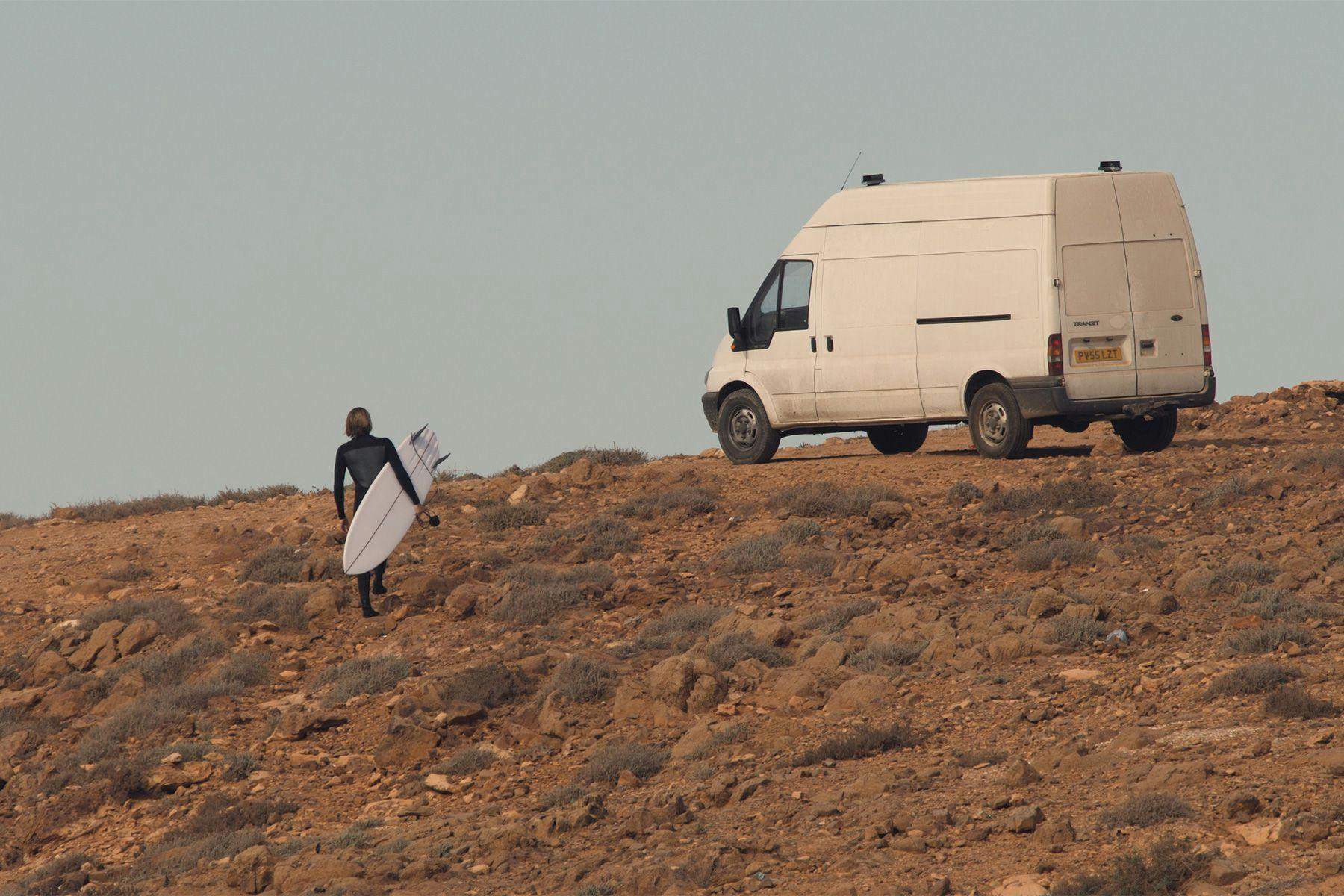
As somebody who has built a career out of surf travel, you’ll obviously have been hugely impacted by the pandemic. How has it hit you, and how have you responded?
It’s all pretty weird, the whole COVID thing. [In Australia] We basically just can’t travel. I’m not sure what it’s like over on the other side of the world, and in the States, but people do seem to be moving around a lot more. It hasn’t really sat well with me from a moral stand-point to be jetting around though, even if I could. We’ve still been working on some projects with needessentials and making the most of the time. My partner Aiyana, is from California and it’s been a few years now since she’s seen her family. I’m certainly starting to dream of some places that I’d like to go to again, because I’ve spent a good chunk of my life either saving a couple of dollars to travel or travelling and making the surf films. It’s certainly been the longest that I haven’t travelled overseas and I’m really looking forward to getting back out there.
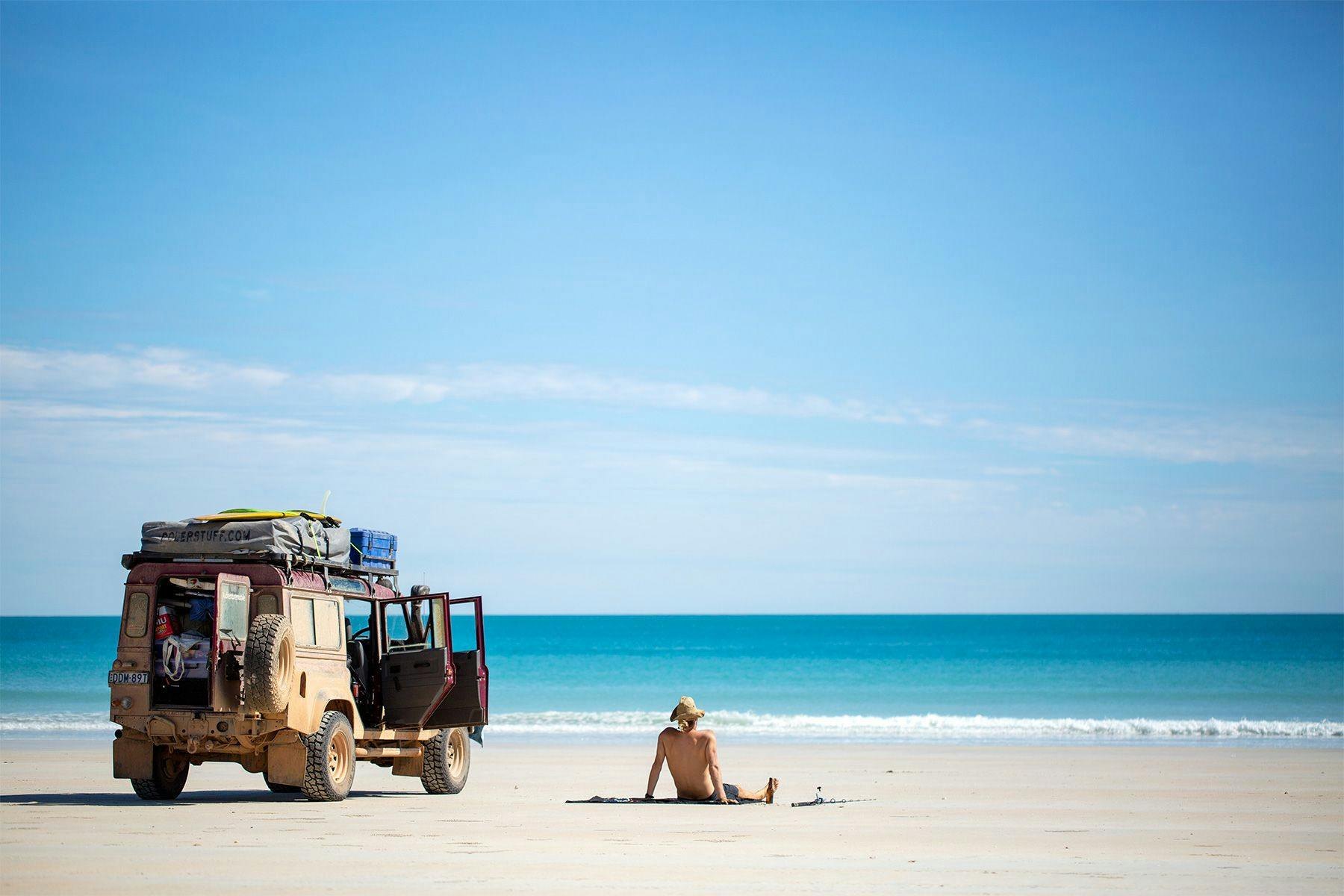
Did you have to cut short the end of your most recent Lost Track Europe/Africa trip because of the emerging pandemic?
Ishka had actually left, and Aiyana and I were planning to travel back, up through Europe when we got the news that they’d stopped running the ferries across the Gibraltar Straight, between Africa and Europe. That made it feel pretty real. It’s hard when you’re in a foreign country to really get a grasp on the news, and international news, and understand just how serious it is. When they stopped the ferries it hit home that there wasn’t much we could do now. Within less than 24 hours of hearing about the ferries stopping we had left the van with a friend, packed up what we could into our bags, and got one of the last flights out of there. It was absolute madness. At the airport just about every flight on the board was cancelled. We’d tactically chosen a flight that didn’t go through Europe, that ended up going through Turkey and kind of the opposite way around – Turkey to Singapore, Singapore across… it was a bit of a long run but all of our flights linked up and we were really lucky to get home. The day that we arrived was when Australia went into full lockdown. I was back in the little caravan that I have on a friend’s property, couldn’t go anywhere, can’t leave the house; Mum only lives five minutes down the road and she dropped over some groceries and things like that. I’d been away for four months so I was also pretty happy to just be at home. But we were very restricted and it’s been pretty weird ever since. All the states in Australia have turned it against each other and are locking down, and there’re plenty of restrictions, but there have been windows and moments of bliss too. We’ve just had to do a bit of dodging and weaving, and make the most of what we have here, which is a lot. Australia is really incredible and I’m grateful to be here and have this time at home, as well.
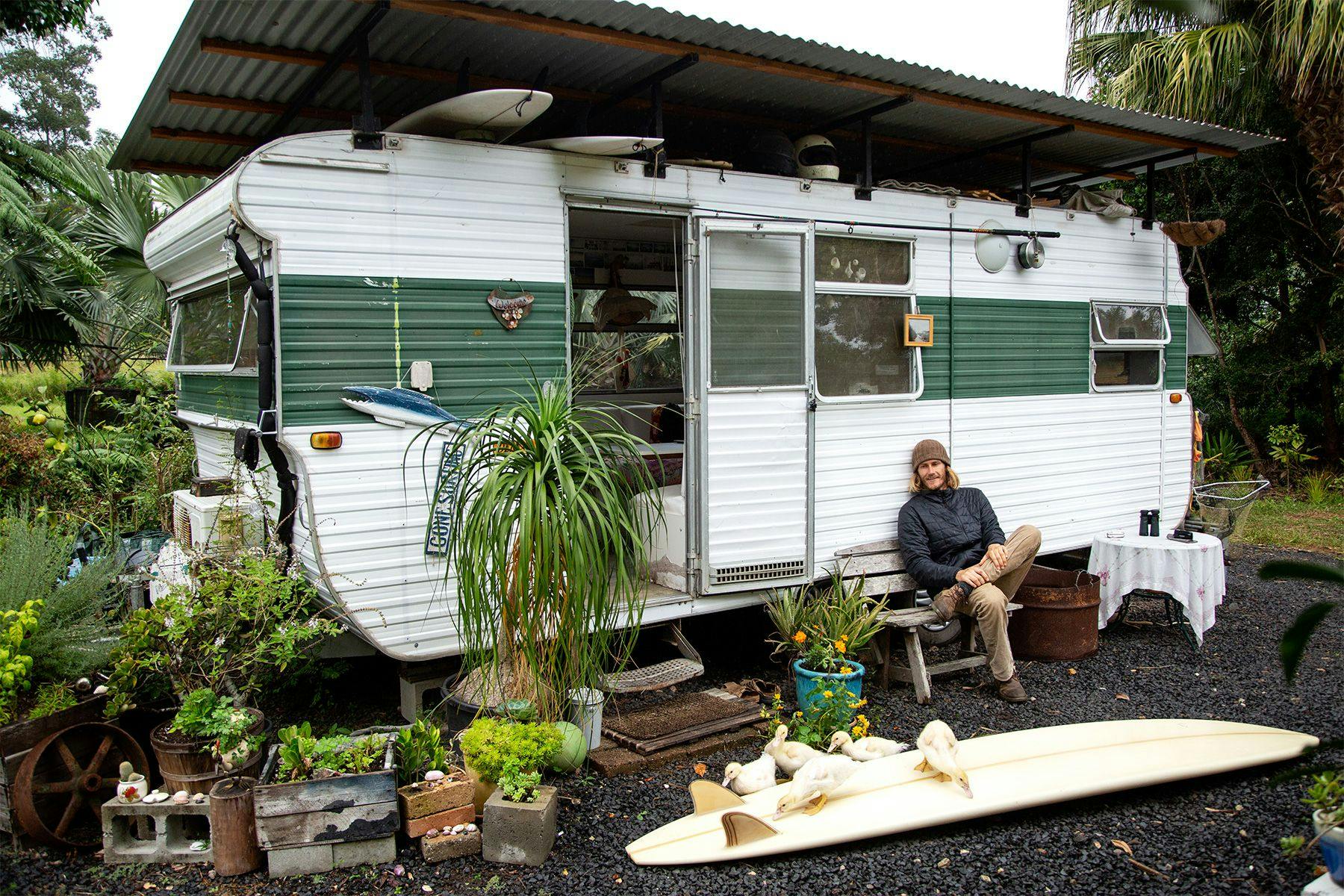
How have you redirected over the last 18 months?
With this whole pandemic, nobody really knows what’s next or how long. At the start I remember not really understanding the repercussions of it all and where things were going to go with it. Now, eighteen months on, it’s becoming normal in a way, which is kind of scary too. Australia’s huge. We’ve been on the road for the last six or seven months, slowing down and spending some time in different parts of the country that I’ve never seen before. I feel like I’ve been really lucky to have that.
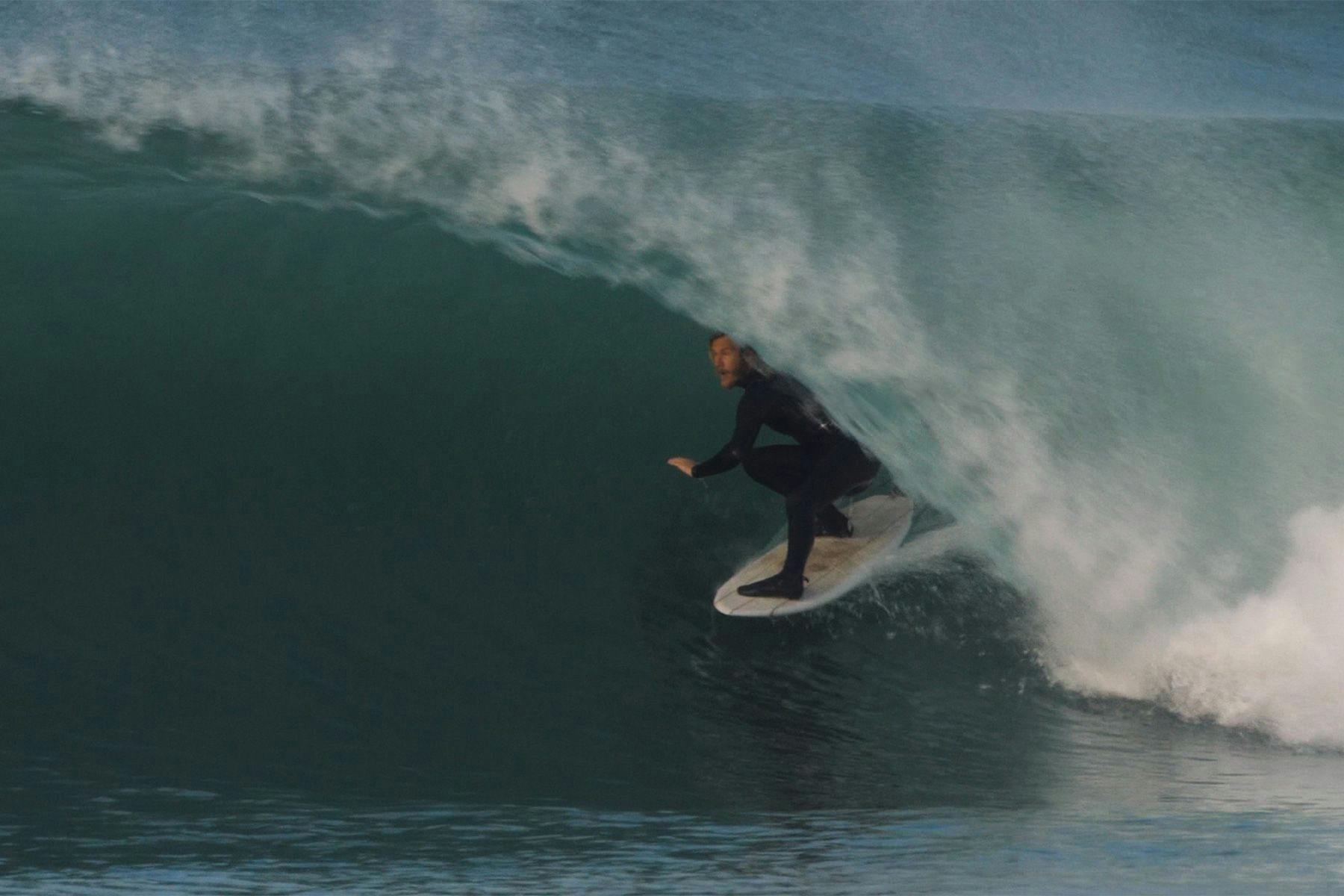
What’s next for Torren Martyn? And what might come after that? Do you have any big plans or dreams, or are you taking things one day at a time?
It’s certainly hard to plan too far ahead at the moment, but I have been really intrigued by sailing. That’s kind of where my head’s been at and I’ve kind of being getting lost in that in terms of what the next chapter is, films, means of travel and just the direction of life. It’s a long way off, because I still need to learn how to sail and I don’t have a boat, but it’s one of those things that has been occupying my thoughts. I do a lot of thinking and daydreaming! There could be a new chapter of films in it, for sure, and Ryan [needessentials‘ founder] has years and years of sailing experience. He sailed solo around the world and he’s telling me that I have to do it. He has a little boat in Yamba and when we get back to the East Coast he’s going to show us the ropes. My girlfriend Aiyana grew up and spent the first ten years of her life on a sailing boat with her parents, so she’s hankering for it too. It’s a long shot, and it kind of scares me, but it’s exciting at the same time. I feel like I’ve been thinking about it and talking about it with friends for long enough now that I can’t really back out. It’d be epic if that comes to life.
*****
Want to watch Torren’s surfing and follow his and Ishka’s adventures? There are plenty of edits to choose from, but being that much of this interview focused on their recent Lost Track: Atlantic project, you could do far worse than starting with the first film in that four-part series.
The author and Surf Simply would to thank Torren for his time, Ishka and Nick for their incredible imagery, and the team at needessentials Europe for facilitating.